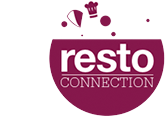

Chelsea Allenby is a Digital Marketer of 9 years and Managing Director of Allenby Digital Ltd, an online marketing agency she set-up in 2015, specialising in social media and content marketing. www.chelseamarketing.co.uk
Everyone has heard of hashtags, it’s 2017 after all! The thing is, not everyone knows how to use them to their advantage. You might even still be a little bit confused about what value a hashtag actually brings. We’re here to clear a few things up and set you on the path to hashtag heaven!
The Purpose of a Hashtag:
A hashtag is a word or emoji that’s used after the # symbol to tag videos and photos on social media. Hashtags were designed to connect similar content together and make it more accessible. Twitter was the platform that gave the hashtag it’s initial popularity, enabling people to easily join in with public discussions on the same topic.
Hashtag Etiquette:
You can use hashtags on most social media channels, but hashtag etiquette differs between various platforms.
Potentially one of the best places to use a hashtag for a restaurant business. You could use 10 different hashtags on an Instagram post and that would be perfectly acceptable and quite standard. It’s best practice to add the majority of hashtags into a separate comment, rather than the caption itself. This simply keeps things tidy and therefore looks more appealing. Using hashtags or ‘tags’ as they are also known, directly increases the number of likes and comments on a photo or video. You can also use hashtags within an Instagram story itself.
On Twitter, you are restricted by a character limit and typically can’t squeeze in more than one or two hashtags. Data shows this is a good thing because using too many hashtags on Twitter can come across as spammy and put off existing or potential new followers. However, tweets with one or more hashtags are 55% more likely to be retweeted than those without. Hashtags on Twitter are best used for events, holidays and things that are happening on a national level.
Facebook was late on the scene when it came to hashtags and they haven’t really taken off in the same way as Twitter and Instagram. It’s okay to use one hashtag in a Facebook post, but often it’s not worth it. Most research and studies have concluded that Facebook posts without a hashtag do better than those with one. BuzzSumo conducted a study that analysed over a billion different Facebook posts across over 30 million branded pages. The conclusion was the same, that posts without hashtags performed much better.
Using the Right Hashtags:
Finding the right hashtags to use is vital and this seems to be the part that newbie hashtaggers get wrong. There are lots of different stats flying around about the best number of hashtags to use and when to use them. The two main questions you should ask are this:
Does the hashtag add value for the reader?
Does the hashtag add value for marketing purpose?
The answers to these two questions will differ based on the social channel, the hashtag itself and the intended audience. As long as you can answer yes to both of these, then you’re using hashtags in the best way and in the way they were intended.
A hashtag adds value if someone can find your content through a popular search, or if it opens the door for followers to look at some more similar content. This is useful and therefore it’s not a wasted hashtag.
A good example would be this:
#LondonFood on a photo of some food in your London based restaurant.
A bad example would be this:
#Customers on a photo of some food in your restaurant.
Always make sure the hashtag is relevant and avoid putting multiple words together to create really long hashtags. #OurRestaurantIsTheBestInLondon. Unless of course, it’s a popularly used hashtag, then that would be an exception. On the opposite side of this, don’t hashtag each individual word like this: #Come #Down #To #Our #Restaurant. This might seem obvious but you’d be surprised just how many people still do this. #To is going to add 0 value and provide you with 0 value, it serves no purpose.
Popular Hashtags in the Restaurant Industry:
You will need to conduct your own research to find the hashtags that will work best for your particular area or niche, but these are some of the most popular hashtags in the food industry:
#FoodPorn
#Foodie
#FoodIsLife
#Foodgasm
#Nom #NomNom
#EatingfortheInsta
#Foodstagram
#Vegan
#Pizza (Also the pizza emoji)
You might also consider starting your own unique hashtag. This is a great way to get your customers to share more user-generated content in connection to your brand. To make your own hashtag work you really need to incorporate it into other areas of your branding and marketing. Include it on menus, flyers, banners and inside your restaurant wherever possible.








Comments